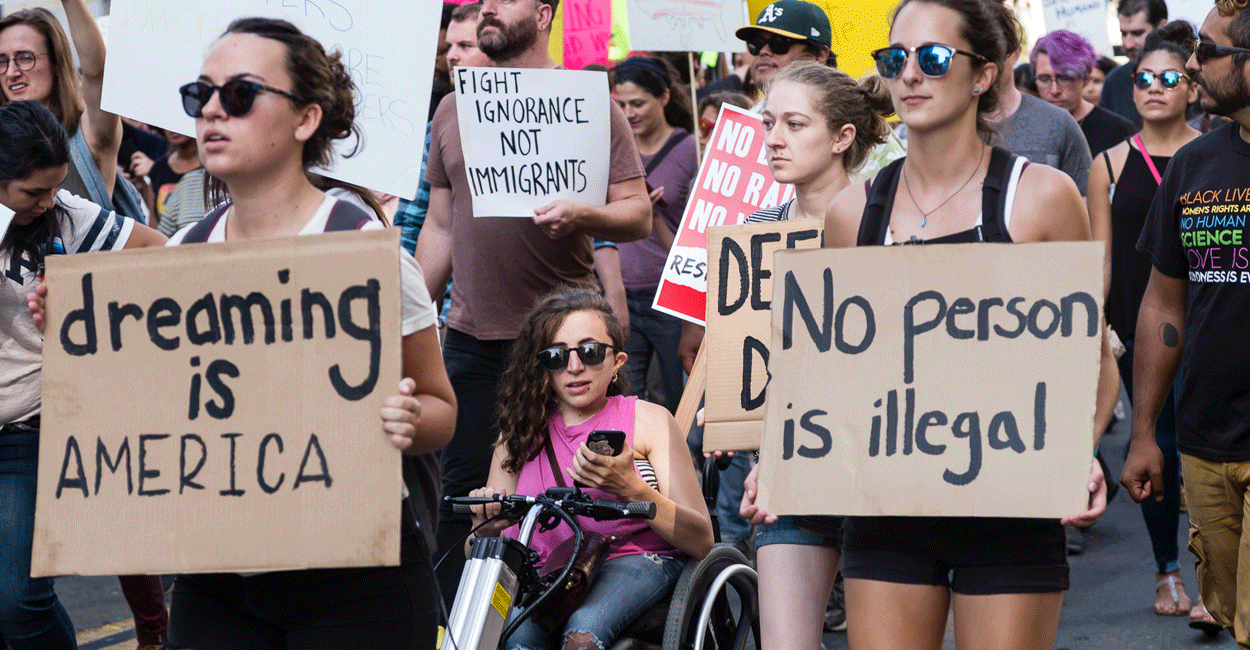Opinion, U.S.
How Trump Is Becoming A Nightmare For The Dreamers (DACA)

Deferred Action for Childhood Arrivals is set to expire in March 2018
The fate of DREAMers or the undocumented children of immigrants currently protected by the Deferred Action for Childhood Arrivals (DACA) seemed bright under President Obama. They were allowed to pursue higher education and work legally and were promised a way to become legal citizens in the near future.
However, recent weeks have shown that lawmakers and the White House differ on creating a new immigration policy, and the fate of undocumented immigrants remains uncertain as they await government action.
On September 5, 2017, President Trump announced the end of the Deferred Action for Childhood Arrivals program. He urged Congress to create a replacement for DACA within six months when the program would officially be phased out.
However, he has alternately waffled between praising DREAMers and criticizing Congress for not creating a bill to protect them and demanding any undocumented immigrants be deported.
Last Thursday, a meeting with lawmakers to discuss a proposed bipartisan plan resulted in the president disparaging African countries and Haitian immigrants.
The details of the Durbin-Graham bill have not been fully released but seem to consist of several points. Undocumented immigrants who came to the United States as children (currently estimated at 800,000 people) who fulfill educational and legal requirements will be allowed to apply for green cards after a certain number of years or after three year – like other green card holders. They will be allowed to apply for citizenship.
The bill would prevent so-called “chain migration.” Parents of DREAMers will not be able to be sponsored by their children to get green cards but will be able to achieve some legal status.
The diversity visa lottery will end and the 50,000 visas granted through the program will instead be given to people from underrepresented countries and immigrants who currently have temporary protected status. This part of the bill was allegedly what prompted Trump’s vulgar comments as many African nations are underrepresented and Haiti is presently a temporarily protected country.
The final part of the bill allocates money for increased border control or what the administration calls building the wall.
Further complicating the bill is a ruling from federal judge William Alsup of Federal District Court in San Francisco on January 9 stating the government must “maintain the DACA program on a nationwide basis.” President Trump’s tweets were presented as evidence that the president supports DACA.
“He noted that in September, the president wrote: “Does anybody really want to throw out good, educated and accomplished young people who have jobs, some serving in the military? Really!” Such tweets, the judge said, bolstered the idea that keeping the program going was in the public’s interest.” This argument directly shows that the president’s public remarks dispute each other enough that he shows support for a program he previously announced was ending.
Legal scholars questioned whether individual judges should be able to make rulings affecting national laws. On January 16, the Justice Department again announced it would appeal the judge’s decision to repeal DACA and take the “rare step” of-of asking the Supreme Court to rule the legality of the case. The same thing happened in 2014 when Judge Andrew S. Hanen of the Federal District Court in Brownsville, Texas “delayed an executive action drafted by Mr. Obama that gave as many as five million undocumented immigrants temporary protection from deportation and permitted them to work.” Judge Hanen ruled the program to help the parents of DREAMers could not go into action until litigation ended. The case eventually went to the Supreme Court, whose decision was tied 4-4, essentially killing the bill before it began.
Ironically, President Trump held a public meeting with lawmakers to discuss DACA the same day as Judge Alsup’s ruling. According to reports, Trump took every position possible during the meeting, at times expressing support for DACA to continue while insisting any bill must include funds for a border wall. The lawmakers present repeatedly tried to reign the president in and pressed for clear answers. According to The Atlantic, “he held forth in a way that demonstrated he has a basic understanding of the immigration issue but is not conversant on the details and jargon that lawmakers have been negotiating on and off for years.” The meeting ended without any decisions being made. Later, Sen. Lindsey Graham (D-South Carolina) tweeted it was the “Most fascinating meeting I’ve been involved with in twenty plus years in politics.”
While President Trump, Congress, and the courts continue their fighting, the lives of DREAMers are in limbo. According to Department of Homeland Security head Kirstjen Nielsen, “It’s not going to be a priority of the Immigration and Customs Enforcement to prioritize their [DREAMers] removal.” Immigration courts are so backlogged that adding the children of illegal immigrants who are otherwise law-abiding citizens would be inefficient.
But this statement is of little comfort to DREAMers when the news cycle is dominated by contradictory reports about their future every day. Shortly after President Trump’s decision to end DACA in September was announced, Karla Cornejo Villavicencio, a Yale graduate student protected by DACA described the mental and physical toll. DREAMers face. In the New York Times, she detailed her peers’ experience with depression, thoughts of suicide, weight loss, chronic exhaustion, etc. She’s always worried about her parents and wrote only death will cure her anxiety.
A Michigan man was deported back to Mexico after three decades in the United States on Tuesday, January 16. Though Jose Garcia was brought to the US when he was ten years old, the 39-year old man father of three is too early to qualify for DACA, which requires immigrants to be under 31 years old in 2012. After trying to receive legal status in 2005, he became subject to deportation but was able to stay in the country under President Obama’s tenure. He regularly checked in with ICE officials periodically but was told at his last check-in he was up for deportation. Though his family is hopeful laws will be passed to allow him to come back, his future looks grim.
Losing DACA will prevent students from continuing their education, lose their legal jobs and state-sponsored health insurance, lose their driver’s license, etc. If not deported, these children of undocumented immigrants, often college educated, will be forced to take underground jobs washing dishes or cleaning houses. The contributions they make to the country’s economy, along with their potential, will vanish.
But this state of fear seems to be what the current administration wants. Thomas Homan, the acting director of ICE, recently said: “If you’re in this country illegally and you committed a crime by entering this country, you should be uncomfortable. You should look over your shoulder, and you need to be worried.”


